If you grew up in the south, you might have looked warily at the overtaking kudzu that swallowed up whole trees and even whole forest edges.
Perhaps your parents told you to keep your distance because “the snakes were hidden in those tendrils”. This was an urban legend, but it was enough to scare most children in the south. The lore also mentioned that kudzu grew a mile every hour and it would EAT the south!
Of course, this has not happened, and the plant has been here for nearly 200 years. Still, kudzu is an eerie thing to look at from a distance.
Fortunately, for preppers, most of this plant is edible and it can act as a resource with many applications. Kudzu as a famine plant would offer up plenty of food for those who know how to harvest it and take advantage of its many parts.
Identification
Kudzu can easily be mistaken for poison oak by the untrained eye. There are many distinct factors that set the two apart but if you don’t know what either looks like kudzu could deceive you. It’s a vining plant with lobed ‘leaves of three’.
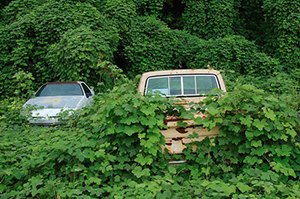
The best sign that you are dealing with kudzu is the sheer volume of plants in the area. You see, you might run into a vining plant with leaves of three that is poison oak or ivy, however, it won’t overtake entire trees.
Kudzu dominates a landscape when you find it.
The leaves and the vines are covered in little bristles and the plant also has purple flowers to further help you ID it.
Look for a forest or waste area that is blanketed in kudzu and that sign will assure you. You should never be identifying one standalone plant by itself. If you find yourself in that situation, you are not identifying kudzu.
Related: My Famine Food Storage Menu
Edible Parts
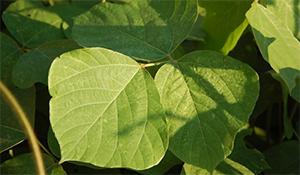 Kudzu is easily identified both because of its distinct features and the sheer volume. As we mentioned, kudzu is a highly invasive plant species that basically takes over everything around it. Therefore, it would be such a great famine food because of the abundance. You couldn’t keep up with eating it!
Kudzu is easily identified both because of its distinct features and the sheer volume. As we mentioned, kudzu is a highly invasive plant species that basically takes over everything around it. Therefore, it would be such a great famine food because of the abundance. You couldn’t keep up with eating it!
The leaves, stems, vines and starch root are all edible.
The leaves, vines, and stems can be sautéed and eaten like greens or asparagus. Eaten raw, kudzu has a strange texture because of its bristly nature. However, if you can get over that it’s fine to eat raw.
Do not eat the seeds or seed pods, as they are not safe for human consumption.
Preparations
There are many ways to prepare kudzu and the starchy root is used in Asian cuisine to thicken and add texture to things.
The leaves are best chopped up in stews and soups or sautéed as a side green. You could also start a little minced garlic in some olive oil over medium heat. Sautee the garlic in the pan until it’s fragrant. Then add your torn or chopped kudzu leaves and tendrils.
When they are tender and wilted you are ready to eat them. Season with some salt and enjoy it.
Processing and using the starchy kudzu root can be a little more challenge.
The roots are massive and can be deep. Some of the larger roots have been as big as 200lbs! That’s a lot of starch.
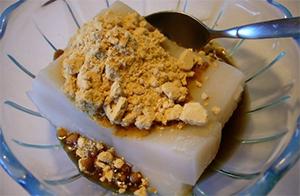
The roots will need to be washed and peeled. They have a brilliant white pulp beneath the skin. This is most often dried and pulverized. In Asian markets you can purchase it as ‘kudzu starch’ it’s not really something you want to eat a lot of on its own.
However, in a famine that might all change.
Still, it’s great for thickening and making things like puddings and even strawberry kudzu cake.
Homesteading Uses
Another interesting part of this famine food is that it has some outstanding uses around the homestead. Let’s put it this way: People aren’t the only thing that kudzu can feed.
Animal Feed
As an animal feed, you will be able to sustain all sorts of livestock with kudzu growth. From goats to chickens, they will all chew up some kudzu.
Cows, as you would imagine, might eat all the kudzu that they can get to on your property.
If you are racking your brain about feeding animals after SHTF, you might want to investigate Kudzu on the property. Remember, this plant grows fast and is highly invasive so unless you want to only eat kudzu, you need some goats or something to keep it in check.
Erosion Control
Kudzu was introduced to the USA in the 1800s to help with soil erosion. Because this plant grows so fast and blankets the ground, it serves as a great plant to aid in erosion control.
Apparently, it also has a proven history in this nation. If your property suffers from this, it might be worth planting some kudzu to deal with things like rain and wind damage. One thing is for sure, it will cover the land you hold dear, in a hurry.
Nitrogen Booster
Kudzu is a legume. That means that it is a nitrogen fixer for the soil it is buried in. While this might sound great, just remember, any soil it fixes it will have to be removed from. That is not an easy task. If you can manage a small patch that you can keep under control it might be an ally.
Be warned, if it gets out of control it could take over your growing areas.
Basketry
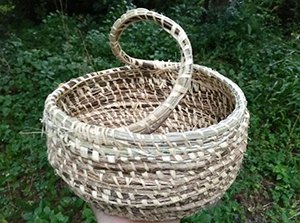 The vines are a great resource for weaving baskets. Some people use them fresh and others split and dry them. Kudzu baskets are the perfect example of a sustainable resource.
The vines are a great resource for weaving baskets. Some people use them fresh and others split and dry them. Kudzu baskets are the perfect example of a sustainable resource.
If you find utility in basket weaving, kudzu becomes a resource that could go as far as making your money!
Starvation is one of the top concerns of preppers. When we find these great survival foods like kudzu it’s hard not to get excited!
Of course, a balanced diet is the most effective means of staying alive and healthy in the troubled times ahead. A collection of survival foods could add a layer to your long-term food storage and stave off the problem of running out of food.
Kudzu is one of the rare famine foods that also has unparalleled utility beyond just feeding people.
What has been looked at as an unstoppable invasive weed, bent on eating the south, might just be the best survival food in the forest!
You may also like:
 5 Survival Foods Your Grandmother Used To Make
5 Survival Foods Your Grandmother Used To Make
The U.S. Army’s Forgotten Food Miracle (Video)
How $5 A Week Can Get Your Family 295 Pounds Of Food

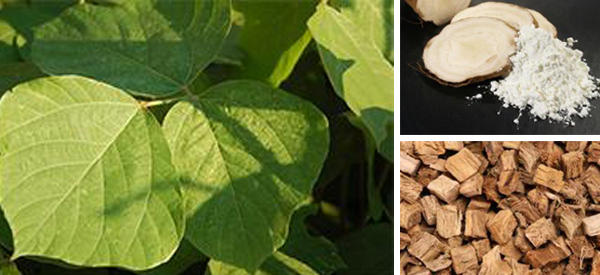













Was wondering if Kudzo only grows in the South? Maybe a Spring, summer and fall planting might be more controlled if your location had harsh winters. Food for thought. (there’s a pun for ya. Lol)
Thanks for featuring Kudzu; it’s the best – and I didn’t even know about the roots. The basket is a great idea but I build a small shelter (I was a kid, it was a fort) and a hammock out of the green vines. Once they dry, they are very strong. PLUS, new Kudzu will overgrow your shelter providing a very cool, very well camouflaged living area. When that dries, you are nearly part of the forest. I LOVE it!
We used to have Kudzu growing on the 20 acres we bought. But after 30 years of running horses, cattle, and goats…. it’s all gone. But I will say this, grazing animals will get FAT eating that stuff. They love it.
Always something new to learn here. Thanks for this article… kudzu edible – who knew. lol
I didn’t grow up there; but, on visits have seen where it swallowed up whole buildings and power poles until they got into the wires and shorted them out.
Known as “The Vine that ate the south” it has been reported as far north as Cleveland and is weathering our winters so far; however, should I see some, I’ll not be eating it; but, killing it, since we already have enough invasive species here to deal with and have enough native plants for food.
I can’t remember it exactly, but when I was a teenager (early 70s) I had a postcard; something about for the South to get Revenge–Plant Kudzu in the nawth! It was too funny!
I, too, reside in Ohio. Where is the kudzu? Thank you.
David,
I did a Google search for ”Does kudzu grow in Ohio” with the following response:
Native to Asia, a scourge in the South, invasive kudzu has moved north into Ohio. An aggressive vine, it can grow up to 60 feet a year. … Kudzu, the “plant that ate the South,” is now in Ohio.
I BTW am located in a county just northwest of the capital.
I looked up a little about “kudzu” and it’s also called Japanese arrowroot. It’s a highly invasive species and grows like crazy. Almost sounds like the ideal thing to have in an emergency. It grows faster than you can eat it. Obviously likes warm climates. Doesn’t grow very well or not at all in Canada. The only small patch that’s ever been found up here was in Leamington, Ontario. The second warmest place up here after British Columbia.
I remember reading something years ago about how the kudzu was so invasive that the govt. (don’t know if state or fed) created a program to try to eradicate it. Is that still a thing or did they give up on it?
1st time i saw kudzu, I just turned 17 and was taking a free bus trip from Uncle Sam to S. Carolina. I saw trees covered with vines and said, what the freek is that? A bro heading south for home and SC, said, That kudzu. It’s killing everything. His father, he said, switched from tobacco and pines to hogs and cattle, then later added goats. If you can’t beat them, join them. Kudzu is one curse that can be a blessing. BTW, Dave has a lot of good vids on YouTube.
Early in my forestry career it was said the Japanese were inquiring how could they draw interest from landowners to cultivate it and sell it to them. Not sure if that got off the ground. Anyone? Two uses I know of is baking soda and toothpaste.
thanks so much for this fine info on a great plant – if also has wonderful medicinal attributes – see James Duke’s Herbal Handbook under Kudzu. He was with the USDA for 30 or so years and often went toe to toe with the FDA working to keep them realistic. His extensive database shows it is used for alcoholism, breast cancer, chest pain, cirrhosis, high blood pressure, deafness, irregular heart rhythm, leukemia, osteoporosis, etc One can get it to grow anywhere by planting lots of seeds until you get plants that are happy and you cull anything else. That is how Luther Burbank developed all those great innovative plants that revolutionized our available vegetables and he has written very extensively about how he did it (as I just said above) best wishes
chris: James Duke’s Herbal Handbook is for sale, used, under 5 bucks. thank you for giving us that. I know family in the southeast and the Japanese are hot on kudzu.
To anyone who would like to grow it, a word of caution before planting: make sure it’s not illegal in that state. Under the DNC, states pass aggressive laws only to push them back till they need a victim to throw under the bus. As politicians see a need to help themselves, they’ll use any excuse. Like the saying goes about liberals, where a body is needed, one will be provided.
chris: I sent for a copy, thanks! niio
I’d like to know where to get some and give it a try. I live in the desert and getting anything to grow is quite the challenge. I live in southern Nevada out in the boonies and doubt it will grow here as it gets extremely hot during the summer..
Freakie: Make sure kudzu is legal. I’m pretty sure it was declared a noxious invasive in Arizona and California. You already have things as good, anyway, like sweet potatoes, roots and leaves are good food. SPs take a lot less water and won’t eat your house and barn like kudzu can. BTW, a heavy mulch on the soil keeps roots cool and that’s what most plants like, especially when it gets broiling hot out. We average 112 F summers in this part of Arizona. If you have the land, then you should be able to raise a crop of ricegrass, a desert variety of wild rice. It prefers sandy soil and is a perennial. Velvet mesquite for windbreaks and light shade. Indians always planted that in the gardens. they’re a legume, a definite plus. niio
Where can I buy kudzu starts or seeds?
Ranger: Make sure it’s legal where you live. I can’t get it in Arizona and won’t considering how much damage it can do. But, best bet is ask folks in the southeast for seeds. You can look for them online, too. I did, but have had problems getting other seeds that had been irradiated tho the seller had an import license and the supplier was licensed to sell to the US. I had a cousin in the Rangers. You folks rock! niio
Ranger63:
Email me, concerning Kudzu starts. Nighthawk3569@yahoo.com
Nighthawk3569
Trust me – from one that lives in the south, it’s HIGHLY a invasive and once it takes root, it almost impossible to get rid off. It will literally take over. My neighbor had it in his yard and it would try to cover his house every season. In the 20 years I lived there, he could never get rid of it. Trust – you don’t want it.
Hi! Loved your post about this nasty plant. I say nasty because I’ve lived in the south for most of my life and hated seeing what it foes to vacant property. But… never lnew it was edible. I appreciate finding out more about it and the basics of survival food, thank you. Since the pandemic hit us I’ve been doing a lot of research about survival. I’m keeping your site in my list of go-tos. Thanks again.
I wish I could raise it here, in Arizona. Cousins in N. Carolina raise goats and cattle on it, and pigs, but pigs go in after a frost and will wipe out most all the roots. niio
Please!! Comments are not just for long time readers, some of us are new to this blog: WHAT the heck is niio!!!